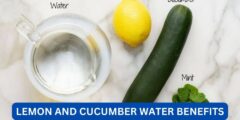In today’s society, dieting has become a popular trend as people strive to achieve their desired body weight and shape. However, with the abundance of fad diets and quick-fix solutions, it can be challenging to find a sustainable and healthy approach to weight loss. This is where the concept of “how not to diet” comes in. It focuses on making small, sustainable changes to one’s eating habits rather than following strict and restrictive diets. In this article, we will explore the concept of “how not to diet” and provide some delicious and nutritious recipes that align with this approach.
Contents
Understanding “How Not to Diet”
The term “how not to diet” was coined by Dr. Michael Greger, a physician, and New York Times bestselling author. In his book, “How Not to Diet: The Groundbreaking Science of Healthy, Permanent Weight Loss,” Dr. Greger emphasizes the importance of focusing on the quality of food rather than the quantity. He argues that instead of counting calories or restricting certain food groups, we should focus on consuming whole, plant-based foods that are nutrient-dense and low in calorie density.
This approach is based on the principle of calorie density, which refers to the number of calories per pound of food. Foods with a low calorie density, such as fruits, vegetables, and whole grains, are more filling and satisfying, making it easier to consume fewer calories without feeling deprived. On the other hand, foods with a high calorie density, such as processed and fried foods, are less filling and can lead to overeating and weight gain.
Read:a treasury of great recipesDr. Greger’s approach also emphasizes the importance of incorporating healthy habits into our daily routines, such as regular exercise, getting enough sleep, and managing stress. These lifestyle factors play a significant role in weight management and overall health.
The Benefits of “How Not to Diet”
Following the “how not to diet” approach has numerous benefits, both for weight loss and overall health. Here are some of the key benefits:
- Sustainable weight loss: Unlike fad diets that promise quick results but are not sustainable in the long run, “how not to diet” focuses on making small, gradual changes that can be maintained for a lifetime. This leads to sustainable weight loss and prevents the yo-yo effect of losing and gaining weight.
- Improved overall health: By focusing on consuming whole, plant-based foods, “how not to diet” can improve overall health. These foods are rich in essential nutrients, vitamins, and minerals, and can help prevent chronic diseases such as heart disease, diabetes, and certain types of cancer.
- Increased energy and vitality: Eating a diet rich in whole, plant-based foods can provide the body with the necessary nutrients to function optimally. This can lead to increased energy levels, improved mood, and a better quality of life.
- Reduced risk of food cravings and binge eating: By consuming foods with a low calorie density, we can feel more satisfied and less likely to experience food cravings and binge eating. This can help with weight management and prevent unhealthy eating habits.
Delicious and Nutritious “How Not to Diet” Recipes
Now that we understand the principles of “how not to diet,” let’s explore some delicious and nutritious recipes that align with this approach. These recipes are easy to make, budget-friendly, and packed with essential nutrients to support weight loss and overall health.
Read:won ton recipes1. Quinoa and Black Bean Salad
This quinoa and black bean salad is a perfect example of a “how not to diet” recipe. It is packed with plant-based protein, fiber, and essential vitamins and minerals. Plus, it is incredibly versatile, and you can add your favorite vegetables to make it even more nutritious.
Ingredients:
- 1 cup quinoa
- 1 can black beans, drained and rinsed
- 1 red bell pepper, diced
- 1 cucumber, diced
- 1 avocado, diced
- 1/4 cup chopped fresh cilantro
- 1/4 cup lime juice
- 2 tablespoons olive oil
- Salt and pepper to taste
Instructions:
- Cook quinoa according to package instructions and let it cool.
- In a large bowl, combine the cooked quinoa, black beans, red bell pepper, cucumber, avocado, and cilantro.
- In a small bowl, whisk together the lime juice, olive oil, salt, and pepper.
- Pour the dressing over the quinoa and bean mixture and toss to combine.
- Serve and enjoy!
2. Baked Sweet Potato Fries
Sweet potatoes are a nutrient-dense food that is low in calorie density, making them a perfect addition to a “how not to diet” meal plan. These baked sweet potato fries are a healthier alternative to traditional fries and are just as delicious.
Read:what is the recipe of coca colaIngredients:
- 2 large sweet potatoes, cut into fries
- 2 tablespoons olive oil
- 1 teaspoon garlic powder
- 1 teaspoon paprika
- 1/2 teaspoon salt
- 1/4 teaspoon black pepper
Instructions:
- Preheat the oven to 425°F (220°C) and line a baking sheet with parchment paper.
- In a large bowl, toss the sweet potato fries with olive oil, garlic powder, paprika, salt, and pepper.
- Spread the fries in a single layer on the prepared baking sheet.
- Bake for 20-25 minutes, flipping halfway through, until the fries are crispy and golden brown.
- Remove from the oven and let them cool for a few minutes before serving.
3. Lentil and Vegetable Soup
Soups are an excellent way to incorporate a variety of vegetables into your diet. This lentil and vegetable soup is not only delicious but also packed with fiber, protein, and essential nutrients.
Ingredients:
- 1 cup dried lentils
- 1 onion, chopped
- 2 cloves garlic, minced
- 2 carrots, chopped
- 2 celery stalks, chopped
- 1 zucchini, chopped
- 1 can diced tomatoes
- 6 cups vegetable broth
- 1 teaspoon dried thyme
- 1 teaspoon dried oregano
- Salt and pepper to taste
Instructions:
- In a large pot, sauté the onion and garlic over medium heat until softened.
- Add the carrots, celery, and zucchini and cook for a few minutes.
- Add the lentils, diced tomatoes, vegetable broth, thyme, oregano, salt, and pepper.
- Bring the soup to a boil, then reduce the heat and let it simmer for 20-25 minutes, until the lentils are cooked.
- Adjust the seasoning if needed and serve hot.
Conclusion:
The “how not to diet” approach is a sustainable and healthy way to achieve weight loss and improve overall health. By focusing on consuming whole, plant-based foods and incorporating healthy habits into our daily routines, we can achieve long-term results without feeling deprived or restricted. The recipes mentioned in this article are just a few examples of the delicious and nutritious meals that align with this approach. So, next time you’re looking for a healthy and satisfying meal, remember to follow the principles of “how not to diet” and enjoy the benefits it has to offer.









